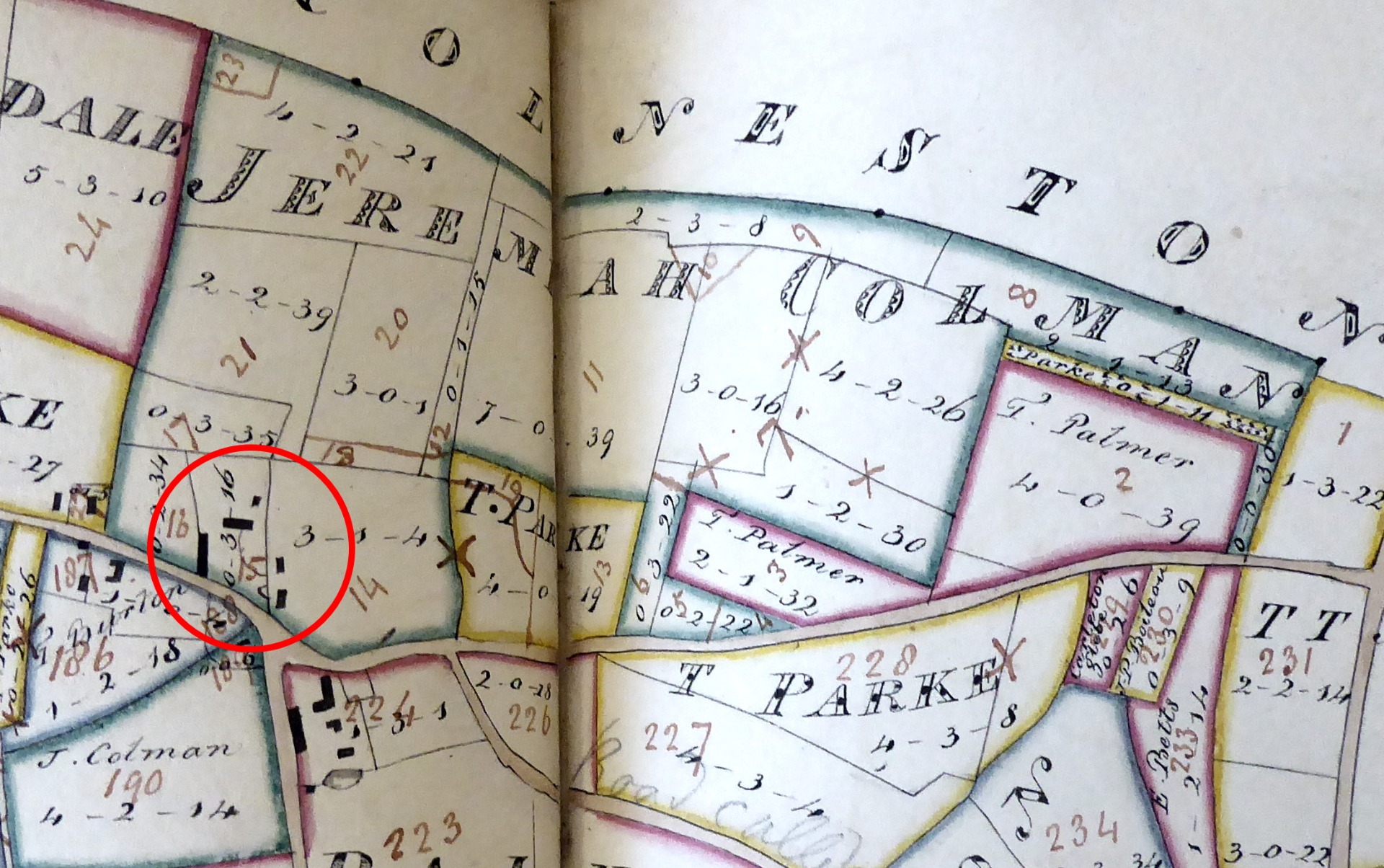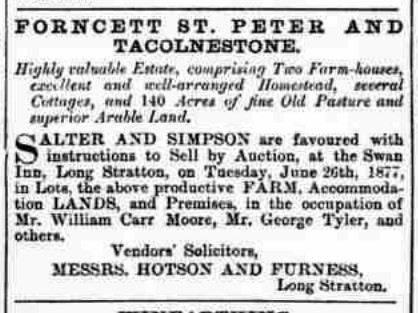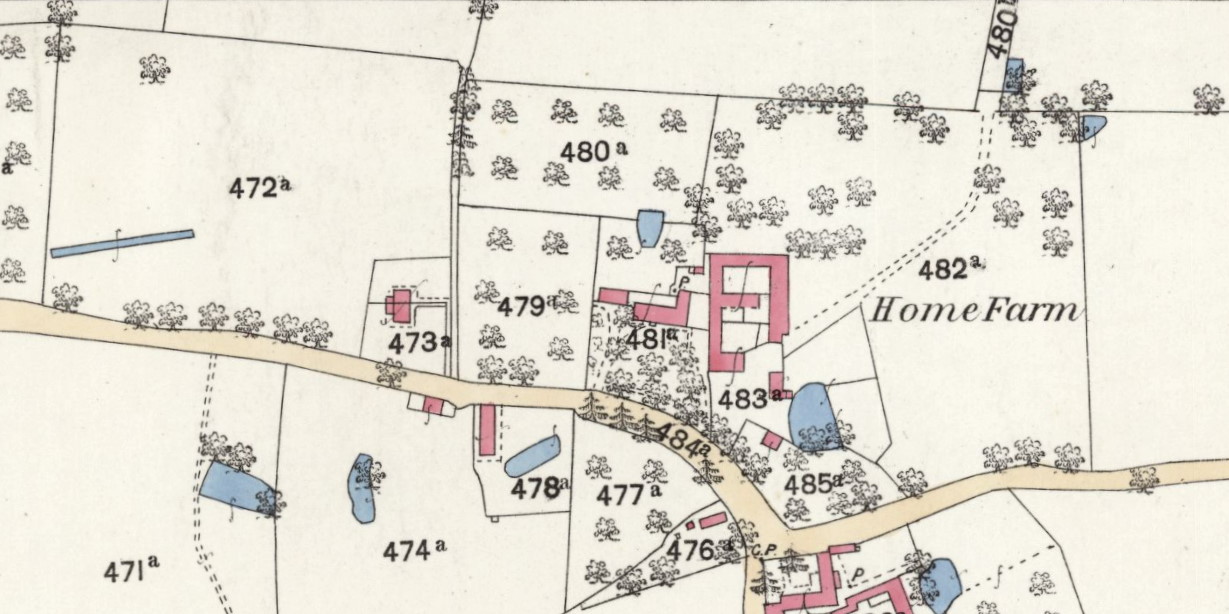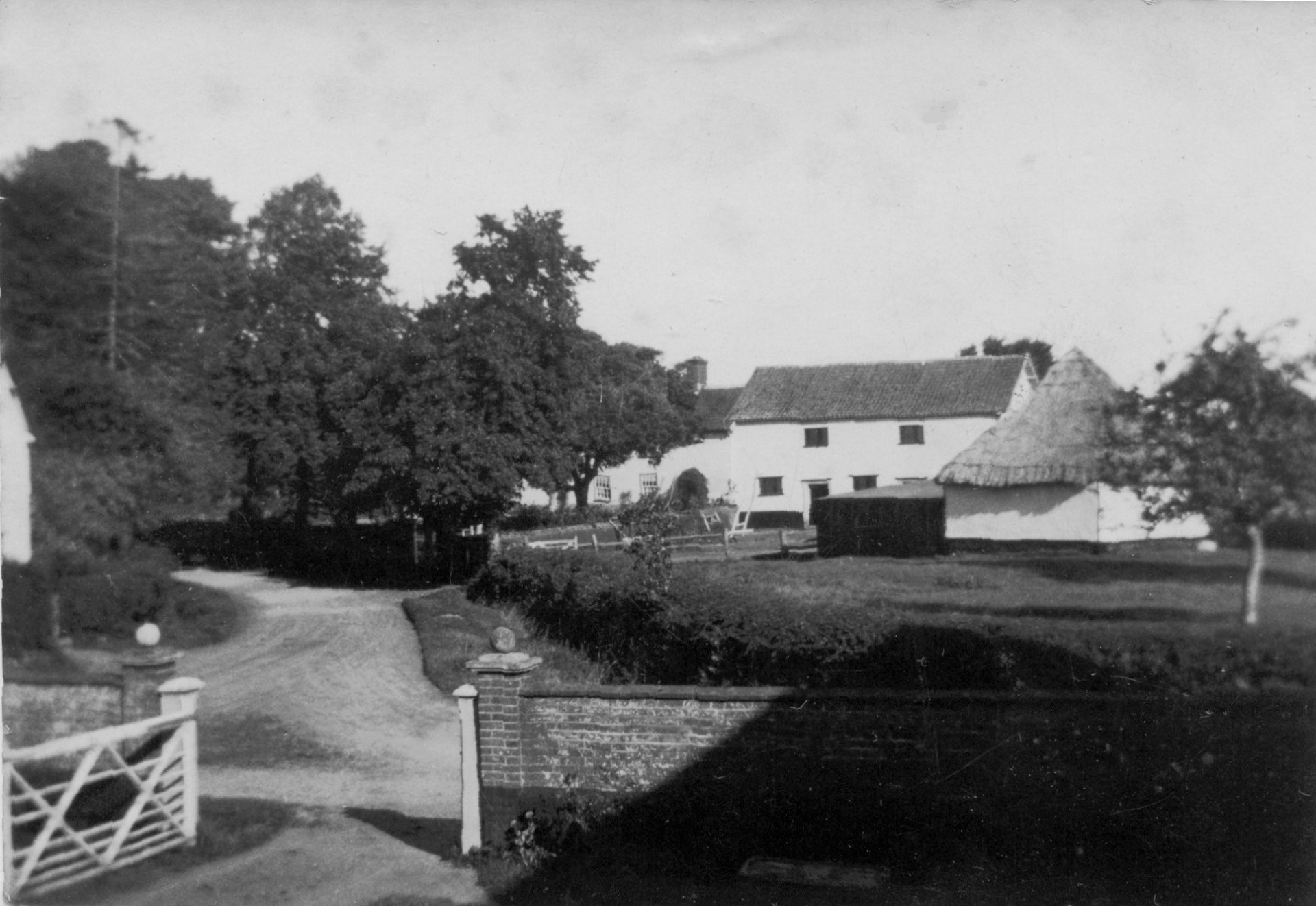
Lime Tree Farm - Forncett End
Lime Tree farmhouse (earlier called Home Farm) is an imposing building that sits back from the Long Stratton Road at the eastern end of Forncett End. This timber-framed farmhouse is thought to have been built in the 17th century and had its present brick cladding added in the 19th century. The farmhouse was surrounded by a collection of farm buildings, and when surveyed in 1998 it was described as "a rare survival of a complete clay lump farmstead of the 1840s, comprising a barn, stables, hayloft and cart shed, all standing on brick bases". These buildings have since been converted to residential accommodation.
The first identifiable occupant of Home Farm is Jeremiah Colman who is shown as the owner on the 1813 Enclosure map of Forncett. Jeremiah was born in Wymondham in 1761, but at some point his parents (Henry and Martha Colman) had moved to Forncett and by the early 19th century Jeremiah was a major landowner in the parish.

Jeremiah Colman died in 1816, and in due course the farm was taken over by his son, Henry, who is shown as the landowner in the Tithe apportionments of 1839. Unfortunately, Henry Colman died in July 1841, aged only 38, so the farm was taken over by his wife, Sarah. In 1851 she was farming 130 acres and employing 7 men and 1 boy. In 1858 Sarah's eldest son, Henry Colman jnr., married and took over possession of the farm, whereupon his mother, Sarah, moved to live with her second son, Thomas, who was running a farm in Wattlefield.
However, just three years later, in 1861, Henry is shown on the census as a "retired farmer" and the farm is being run by a tenant farmer, William Carr Moore. Furthermore in 1877 the whole farm was put up for sale.

Norfolk Chronicle 9 June 1877
The reasons for Henry's apparent "early retirement" and the sale of the farm became apparent in December 1883 when Henry Colman brought a case in the High Court in London against his younger brother, Thomas, and John Hotson, formerly a member of the firm Hotson and Furness solicitors in Long Stratton.
The newspapers reported that in June 1861 Henry had entered into a trust deed with his brother Thomas and John Hotson to manage his affairs because "he became embarrassed and could not trust himself with the management of his own affairs". For some years Thomas took a significant part in the management of the trust, but in 1869 the two brothers quarrelled, and Thomas requested Hotson to take over full responsibility for the trust. Thomas had apparently authorised the sale of the farm in 1877 but Hotson produced documents purporting to show that all significant transactions had been agreed with Henry Colman. Then, when Thomas Green himself became bankrupt in 1881 Henry found that money which he believed that he was owed by Thomas was not available. The lengthy record of the case in the newspapers strongly suggests that Hotson (together with his sisters, Mary and Elizabeth, who had funded mortgages on Colman's property) had effectively managed to render Henry Colman penniless while taking regular "costs" from the trust. Nevertheless, the judge in the case did not find that Hotson could be held responsible for any of Henry's losses!
Interestingly, John Furness, who lived at The Grove in Forncett and was Hotson's former partner, wrote to the editor of the Norwich Mercury clearly suggesting that the outcome of the case was unsatisfactory, that Henry Colman's vulnerability had been exploited, and that his own evidence in support of Henry Colman had been ignored!
Henry Colman spent the rest of his life working in Forncett as a general labourer. He died in 1899, aged 65, and is buried at St. Peter's. Thomas Colman and his family moved to Lowestoft where he opened a lodging house.
Following the sale of Home Farm in 1877 it was run by another tenant farmer, George Smith who was farming 186 acres and employing 4 men and 2 boys in 1881. However, in 1886 Smith left the farm and it was taken over by William Bowman who farmed there until 1892 when it was again up for sale.

Home Farm in 1883 - OS map published 1884

Norwich Mercury 24 September 1892
The purchaser appears to have been Mr. John Bean who did not come from a farming family. He was born in Lincolnshire and, in his 30s and 40s, had various jobs, including gardening and toll gate keeper. His first wife died in 1862 and then in 1873 he married a widow, Charlotte Middleton (née Tallowin), in Hellesdon outside Norwich. By the census of 1881 he was farming 66 acres in Catfield, between Potter Heigham and Stalham, together with his daughter, Jane Selina, and his son-in-law, Alfred Orris. John Bean described himself once more as a widower, which is surprising because his wife, now Charlotte Bean, was still very much alive! She is recorded as living at Marylebone Workhouse in London, where she worked as a needlewoman, from at least 1891 to 1903. Charlotte died in Frettenham, Norfolk in 1905.
So, John Bean and the Orris family moved to live at Home Farm and they were probably responsible for changing the name to Lime Tree Farm, which it was certainly called by 1899. Bean became a significant figure in the village and in the Methodist Church, often making his land available for fund-raising events in the village. He died in 1919, aged 95, and is buried at Forncett Methodist church. Lime Tree farm was inherited by Alfred and Selina Orris.
In 1904 Alfred's eldest daughter, Louisa, married William Thurston, the son of a local farmer and some ten years later they took over Corner Farm, nextdoor to Lime Tree. Alfred's second daughter, Lilian, married Thomas Oliver in 1914 and when Alfred Orris died in 1927 Thomas and Lilian took over the running of Lime Tree farm.

Lime Tree farm around the 1920s
Thomas Oliver died in 1934 (aged 52) and the farm was briefly run by William Chaplin (who was probably a tenant farmer), but by 1939 the new occupants of Lime Tree Farm were Thomas Lord and his family. Tom Lord was born in Mulbarton in 1876 and had run various farms in the area, most recently White House farm on Bentley Road in Tacolneston.

Thomas and Ellen Lord
Tom Lord ran Lime Tree farm until about 1955 when he retired and moved to live at Walnut Tree House in Forncett End. The farm was taken over by Lord's daughter, Ellen Lord, and her husband Gerard Philip Chapman. Chapman's family had previously farmed at Hill Farm in West Road (Duck's Mud), Forncett End.

Ellen Chapman (nee Lord) at Lime Tree Farm

Gerard Philp Chapman at Lime Tree Farm

Lime
Tree farmhouse in the 1950s
Lime Tree farm was subsequently taken
over by Gerard Chapman's son Neville and his wife Nora. Neville Chapman took over a mixed farm, which then became
mainly arable with a laying flock. This allowed him to spend more time on
public service as he became increasingly involved in local affairs at parish,
district and later county level.
After a former headmistress of Forncett village school, Mary
Armstrong, was brutally killed, Neville, as chairman of Forncett Parish Council,
led a 12-year campaign to close the hostel for ex-offenders that was housed at Forncett
Grange. The hostel closed in 1992.

Neville Chapman
Neville Chapman, one of the first members elected to South Norfolk Council in 1973, served for 30 years and was chairman in 1989. For many years he stood as an independent Conservative because he opposed political labels in local government when he represented five villages, including Talcolneston. In May 1979, he polled twice as many votes as the official Conservative candidate. He was elected to Norfolk County Council in 1985 and became chairman in May 2003. Neville died in 2013 at the age of 86.
In his later life Neville Chapman moved to Lime Tree
bungalow which he had built next-door to the farmhouse. During the early 2000s the farm buildings to the east
of the farmhouse were converted to residential properties, and the farmhouse
itself was sold in 2019. The farm now operates from a group of buildings on
Northfield Road.
With thanks to the Chapman family and Paul Gardner for help in researching this page.
